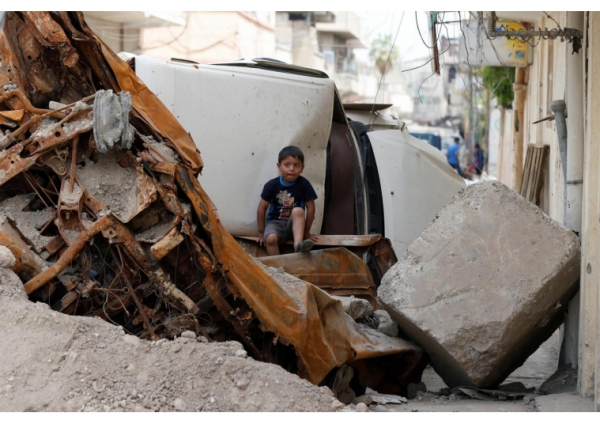Every war that breaks out in the world is fought through the use of explosive weapons. A category to which a wide range of weapons and ammunition belongs, including mortars, artillery, grenades, missiles, rockets and aircraft bombs which, according to the report published by Airwars at the end of October 2020, has several harmful effects on civilians.
Namely, explosive weapons cause three types of effects: primary, secondary and tertiary. The primary effects are those directly provoked by the weapons’ components, which lead to physical harms and brain injuries; the secondary effects are caused by the explosion on the surrounding while the tertiary effects refer to the long-term impact that the damages caused by explosive weapons will have on human life.
For instance, in the past five years one of the wars that has seen considerable use of explosive weapons was the one waged by the US-led international coalition against the so-called "Islamic State" (ISIS) in Syria and Iraq. Various military campaigns that followed have destroyed the basic infrastructure upon which people depend, damaging schools, hospitals, homes, water infrastructures as well as bridges and roads, causing psychological trauma and mass displacement.
According to Airwars estimates, since the start of the war against ISIS, 13,312 civilians have been killed by the bombings carried out by the international coalition, whose main operations have been conducted with the purpose of the liberation of the two capitals of the caliphate, Mosul and Raqqa. Based on available public records, about 12,000 civilians have lost their lives in the Mosul campaign, 75% of them due to explosive weapons. However, the consequences of the battle in Mosul are not limited only to the count of dead and wounded: initially 700,000 people were displaced by the conflict; 130,000 homes were destroyed; approximately 80% of the city's infrastructure has also been razed to the ground. Hence, the damage is incalculable.
The same scenario has occurred during the liberation of Raqqa, where, up to date, estimated 6,000 bodies were discovered, including 4,000 non-combatants. In addition to being a "cemetery", Raqqa is also the «most destroyed city of modern times». More than 11,000 buildings have been destroyed by explosions and bombings, including eight hospitals, 29 mosques, more than 40 schools and five universities. «Street after street of windowless, hollowed-out buildings. Miles of rubble. Piles of twisted metal. Utter ruin. There has been no assistance for residents desperate to rebuild, and entire families are reduced to living in bombed-out husks of buildings. Meanwhile, many children spend all day scavenging in the rubble for bits of steel and plastic they can sell so as to buy food. They risk injury and death from unsafe buildings and uncleared landmines», said Kate Allen, director of Amnesty UK, after her visit to the Syrian city in May 2019.
Finally, what are the measures that can be undertaken to prevent similar damage occurring in the future? According to Airwars, States should avoid the use of wide-ranging explosive weapons and attempt to predict the direct and indirect effects of the use of explosive weapons on civilian lives. They should also plan military operations in light of the above objectives as well as actively support the recovery phase and the reconstruction building process in order to accelerate and make the reconstruction of countries destroyed by wars effective.
To see more, please visit:
https://www.paxforpeace.nl/publications/all-publications/seeing-through-the-rubble
https://apnews.com/article/bbea7094fb954838a2fdc11278d65460
https://apnews.com/article/bbea7094fb954838a2fdc11278d65460
Author: Antonella Palmiotti; Editor: Aleksandra Krol







